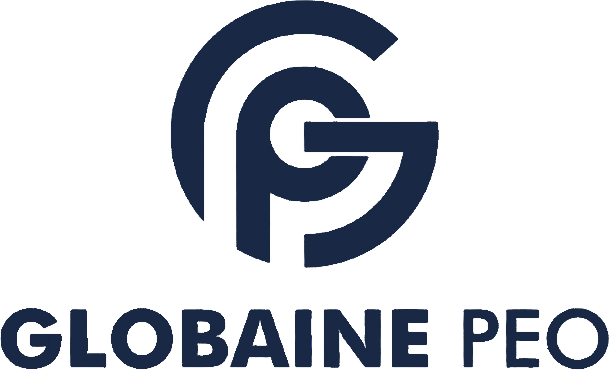Managing payroll in China is more than just paying salaries. Companies must handle social insurance contributions, regional allowances, income tax obligations, and employment-related funds. Each component requires precision and compliance with China’s labor and tax regulations.
This guide offers a complete understanding of payroll processes in China, covering salary calculations, social contributions, taxes, and how an Employer of Record (EOR) in China like Globaine can simplify payroll management and ensure compliance.
What Are the Key Components of Payroll in China?
To successfully manage payroll in China, companies must address the following key areas:
- Overtime Payments
- Mandatory Contributions (Social Insurance & Housing Fund)
- Additional Payroll Costs (Regional Allowances & Disabled Workers Fund)
- Salary Distribution
- Individual Income Tax (IIT) Calculation & Filing
- Payroll Outsourcing
Each of these elements comes with its own set of rules, processes, and deadlines, as outlined in detail below.
1. How Are Overtime Payments Calculated in China?
China’s overtime calculations are influenced by the type of employment system:
- Standard Work Hour System
- Comprehensive Work Hour System
- Non-Fixed Work Hour System
Overtime Payment Rates for the Standard Work Hour System
| Time of Work | Overtime Rate (%) |
|---|---|
| Extra hours on weekdays | 150% of hourly wage |
| Hours on weekends | 200% of hourly wage |
| Hours on public holidays | 300% of hourly wage |
Hourly Salary Calculation
Hourly Rate = Monthly Salary ÷ 174 (average number of working hours per month)
Maximum Overtime Limits
- 3 hours/day
- 36 hours/month
💡 Pro Tip: Use payroll software or an EOR in China to automate overtime calculations and avoid costly non-compliance penalties.
2. What Are the Mandatory Contributions for Social Insurance & Housing Fund in China?
Social Insurance Contributions
| Type | Employer Contribution | Employee Contribution |
|---|---|---|
| Pension | 14-16% of contribution base | 8% of contribution base |
| Medical Insurance | 5-12% of monthly salary | 2% of monthly salary |
| Unemployment Insurance | 0.5-0.8% of contribution base | 0.2-0.5% of contribution base |
| Maternity Insurance | 0.5-1% of monthly salary | None (Employer Only) |
| Occupational Injury | 0.5-3% of monthly salary | None (Employer Only) |
Housing Fund Contributions
| Type | Employer Contribution | Employee Contribution |
|---|---|---|
| Housing Fund | 5-12% of monthly salary | 5-12% of monthly salary |
💡Pro Tip: Social insurance rates vary by city. A China EOR like Globaine can ensure you remain compliant with the unique contribution requirements in each location.
3. What Additional Payroll Costs Do Employers Face in China?
Regional Allowances
- Winter Heating Allowance: Required in northern cities like Dalian.
- Summer Heat Allowance: Applicable in southern provinces like Guangdong, typically RMB 150/month from June to October.
Disabled Workers Employment Assistance Fund
| City | Disabled Worker Quota | Employer Contribution Formula |
|---|---|---|
| Beijing | 1.6% of total workforce | % of employees × 60% of social avg salary × 1.7% |
| Shanghai | 1.7% of total workforce | % of employees × actual avg salary × 1.6% |
💡 Pro Tip: Calculate these costs in advance to budget for your total payroll in China. Globaine can manage these complex contributions on your behalf.
4. How Are Salaries Distributed in China?
Most companies in China distribute salaries through Electronic Funds Transfer (EFT).
Steps to Distribute Salaries
- Data Collection: Collect HR inputs (new hires, terminations, salary changes, bonuses).
- Payroll Calculation: Use payroll software to generate a master report.
- HR Review: HR approves payroll data.
- Salary Files: Generate EFT files, payslips, and general ledger.
- Bank Transfer: Approve and distribute salary payments via EFT.
💡 Pro Tip: Foreign bank accounts are often not compatible with China’s EFT systems. Work with a local Employer of Record in China to manage salary payments.
5. How Is Individual Income Tax (IIT) Calculated & Filed in China?
Monthly Taxable Income (RMB) and Tax Rates
| Monthly Taxable Income (RMB) | Tax Rate (%) | Quick Deduction (RMB) |
|---|---|---|
| 1,500 or less | 3% | 0 |
| 1,500 < TI ≤ 4,500 | 10% | 105 |
| 4,500 < TI ≤ 9,000 | 20% | 555 |
| 9,000 < TI ≤ 35,000 | 25% | 1,005 |
Filing Process
- Payroll Data: Collect salary details (gross salary, benefits, contributions).
- Tax Calculation: Calculate IIT using the Tax Bureau’s online system.
- Submit Filing: Submit the tax filing online.
- Payment: Transfer payments via bank.
💡 Pro Tip: Filing IIT across multiple cities can be complex. An EOR in China like Globaine ensures timely filing and error-free payments.
6. Should You Outsource Your Payroll in China?
Benefits of Outsourcing Payroll to an EOR
- Compliance: Adhere to complex local regulations.
- Accuracy: Reduce the chance of calculation errors.
- Time-Saving: Let HR focus on strategic tasks.
- Data Security: Protect sensitive salary details.
💡 Pro Tip: Partnering with Globaine EOR China ensures accurate, compliant payroll, freeing your HR team to focus on more strategic goals.
How Globaine EOR China Can Help
Globaine EOR China provides comprehensive Employer of Record (EOR) services in China, ensuring smooth payroll management, compliance, and efficiency.
Here’s how Globaine helps:
- Payroll Compliance: Ensure local compliance for social insurance, IIT, and housing fund contributions.
- Payroll Calculation: Handle gross-to-net calculations, overtime, and deductions.
- Timely Payments: Ensure employees are paid on time, every time.
- IIT Filing: Handle IIT filings across multiple cities.
- Cost Transparency: No hidden fees, just clear, predictable costs.
💡Get Expert Help: Contact Globaine EOR China to manage payroll in compliance with China’s labor laws.
🔗 Related Articles
By partnering with Globaine EOR China, you can simplify payroll management, ensure compliance, and avoid legal risks. Contact Globaine today for end-to-end support!

